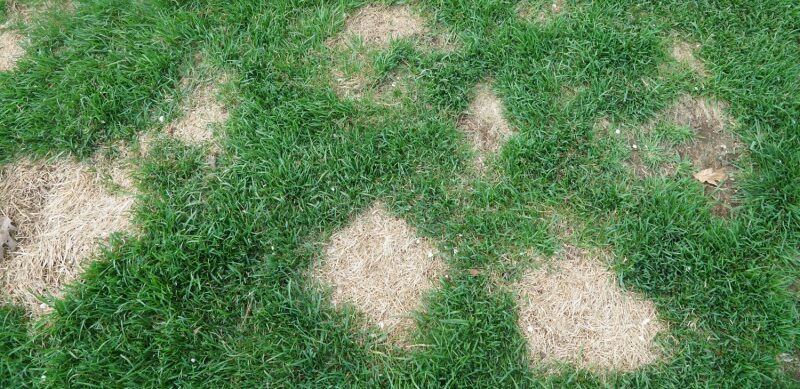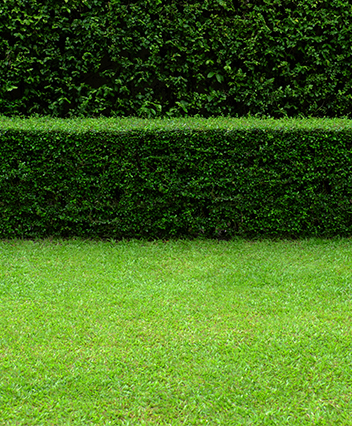Preventing Fall Lawn Diseases: First Fungicide Tips

As fall tiptoes in with cooler nights and morning dew, turf across Central California braces for the silent invasion of lawn disease. Early signs can be deceiving—a patch here, a subtle yellowing there—but for Fresno homeowners who value vibrant lawns, acting before problems escalate is essential. An early sign of stress in your turf might be the subtle shift in how water penetrates the soil, and that’s the ideal place to start considering seasonal care.
Behind the Outbreak: What Makes Fall Risky for Lawns
During autumn, turfgrass experiences the perfect storm: warm soil, cool air, and increased humidity. These conditions supercharge fungal growth, especially if grass is thick, damp, and undernourished. Some of the most notorious threats include:
- Brown patch: Circular patches of dead grass that seem to appear overnight.
- Dollar spot: Small silver-dollar-sized lesions on grass blades that coalesce quickly.
- Rust: Orange-colored spores that rub off on shoes or mower blades.
- Pythium blight: A moisture-loving fungus that devastates turf in humid conditions.
When to Apply Fungicide in Fresno
Timing matters more than quantity when it comes to fungicide. A proactive fungicide application—before visible damage occurs—helps reduce fungal inoculation and gives turf a fighting chance through the season. In Fresno and surrounding areas, keep these timing tips in mind:
- Watch the weather: Late September to early October is the sweet spot—warm soil and cool air make conditions ripe for fungal outbreaks.
- Test your soil temperature: Apply when soil hovers between 65°F–70°F, especially with visible dew in the mornings.
- Base applications on history: If your lawn suffered from brown patch or rust last year, apply fungicide before symptoms resurface.
- Be consistent: Follow the product’s labeled interval—typically every 14–21 days for sustained protection.
- Choose systemic fungicides: These circulate through the plant to protect from the inside out.
- Avoid reactive spraying: Wait until symptoms show, and it may be too late to contain the spread.
- Pair with cultural practices: Fungicide works best alongside proper mowing, watering, and aeration.
These practices form the backbone of effective turf health management and keep your lawn prepared long before fungi have a chance to take root.
Soil Health: The Unsung Hero of Fall Disease Prevention
While fungicides handle active and potential outbreaks, the long-term defense against fall turf disease begins underground. Healthy soil fosters strong root systems, improves water absorption, and enhances nutrient availability — all critical for disease resistance. Compacted or imbalanced soil, on the other hand, creates stress zones that fungi exploit.
Before the season shifts, consider a soil test to check pH levels and nutrient composition. Many lawns in Fresno struggle with alkaline soil, which limits nutrient uptake and encourages shallow rooting. Amending your soil with the right blend of micronutrients or acidifying agents can radically improve turf vitality.
Our team at The Experienced Gardener understands how soil quality impacts turf health management. We offer treatments that go beyond surface solutions, enriching your lawn at the root level so it stays resilient no matter what autumn brings.
Tips for Fall Lawn Fungus Prevention
Being proactive is key. Consider these turf care tactics that pair well with fungicide treatments:
- Aerate your lawn: Allows oxygen and treatment to reach deeper layers of soil.
- Improve drainage: Excess moisture promotes fungal outbreaks.
- Avoid overwatering: Morning watering reduces evening moisture retention.
- Mow properly: Keep blades sharp and mow to the recommended height for your grass type.
- Apply fall fertilizer: Nourishes the turf and strengthens cell walls.
- Clear debris quickly: Leaves and clippings trap moisture and spore activity.
- Rotate fungicides: Prevents resistance and improves long-term disease control.
By aligning these lawn disease control tips with your local turf’s condition, you’ll create a healthier lawn ecosystem that resists seasonal stress.
Are Your Lawn Care Habits Helping — or Hurting?
The way you treat your turf in fall determines whether it thrives or succumbs to fungal stress. Even the best fungicide can’t override poor habits like mowing too short or watering too late in the day. Take a moment to evaluate your lawn care routine.
Are you watering early in the morning? Are your mower blades sharp and sanitized? Are you cleaning up leaf litter before it decays into a fungal sponge?
Proactive behavior — even simple adjustments — can dramatically boost results from any turf fungus treatment in Central California. Think of fungicide as the final layer of defense, but not the only one. Mindful maintenance works alongside your treatments to reduce disease pressure and extend protection.
The Experienced Way to Combat Lawn Fungus
At The Experienced Gardener, we don’t rely solely on chemical solutions—we pair treatments with lawn-care knowledge built over decades of work in Visalia, Fresno, and surrounding communities. Knowing how to prevent lawn diseases in fall means understanding the soil, species, and stressors unique to each yard.
Whether you’re a homeowner managing a modest patch or a commercial site needing large-scale attention, our approach is rooted in science and tailored to your lawn.
Let’s get your lawn the care it deserves. Contact The Experienced Gardener today to create a proactive fall lawn strategy designed just for your turf.


